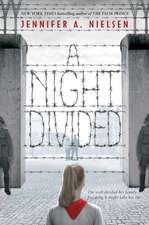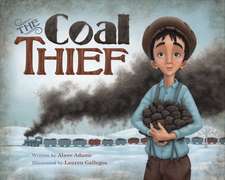The President's House
Autor Margaret Trumanen Limba Engleză Paperback – 31 dec 2004 – vârsta de la 8 până la 12 ani
Opened (though not finished) in 1800 and originally dubbed a “palace,” the White House has been fascinating from day one. In Thomas Jefferson’s day, it was a reeking construction site where congressmen complained of the hazards of open rubbish pits. Andrew Jackson’s supporters, descending twenty thousand strong from the backwoods of Kentucky and Tennessee, nearly destroyed the place during his first inaugural. Teddy Roosevelt expanded it, Jackie Kennedy and Pat Nixon redecorated it. Through all the vicissitudes of its history, the White House has transformed the characters, and often the fates, of its powerful occupants.
In The President’s House, Margaret Truman takes us behind the scenes, into the deepest recesses and onto the airiest balconies, as she reveals what it feels like to live in the White House. Here are hilarious stories of Teddy Roosevelt’s rambunctious children tossing spitballs at presidential portraits–as well as a heartbreaking account of the tragedy that befell President Coolidge’s young son, Calvin, Jr. Here, too, is the real story of the Lincoln Bedroom and the thrilling narrative of how first lady Dolley Madison rescued a priceless portrait of George Washington and a copy of the Declaration of Independence before British soldiers torched the White House in 1814.
Today the 132-room White House operates as an exotic combination of first-class hotel and fortress, with 1,600 dedicated workers, an annual budget over $1 billion, and a kitchen that can handle anything from an intimate dinner for four to a reception for 2,400. But ghosts of the past still walk its august corridors–including a phantom whose visit President Harry S Truman described to his daughter in eerie detail.
From the basement swarming with reporters to the Situation Room crammed with sophisticated technology to the Oval Office where the president receives the world’s leaders, the White House is a beehive of relentless activity, deal-making, intrigue, gossip, and of course history in the making. In this evocative and insightful book, Margaret Truman combines high-stakes drama with the unique perspective of an insider. The ultimate guided tour of the nation’s most famous dwelling, The President’s House is truly a national treasure.
From the Hardcover edition.
Preț: 105.00 lei
Nou
Puncte Express: 158
Preț estimativ în valută:
20.09€ • 21.04$ • 16.66£
20.09€ • 21.04$ • 16.66£
Carte disponibilă
Livrare economică 20 martie-03 aprilie
Preluare comenzi: 021 569.72.76
Specificații
ISBN-13: 9780345472489
ISBN-10: 0345472489
Pagini: 288
Ilustrații: PHOTOS THROUGHOUT
Dimensiuni: 131 x 195 x 18 mm
Greutate: 0.2 kg
Ediția:Reprint
Editura: BALLANTINE BOOKS
ISBN-10: 0345472489
Pagini: 288
Ilustrații: PHOTOS THROUGHOUT
Dimensiuni: 131 x 195 x 18 mm
Greutate: 0.2 kg
Ediția:Reprint
Editura: BALLANTINE BOOKS
Recenzii
“Teens will enjoy the lively history and stories.”
–Booklist
“Always riveting...the book beguiles; it provokes laughter and the occasional deep emotion."
–Richmond Times-Dispatch
“Colorful stories and vignettes . . . {feels] like a personal behind-the-scenes tour.”
–Orlando Sentinel
–Booklist
“Always riveting...the book beguiles; it provokes laughter and the occasional deep emotion."
–Richmond Times-Dispatch
“Colorful stories and vignettes . . . {feels] like a personal behind-the-scenes tour.”
–Orlando Sentinel
Notă biografică
Margaret Truman has won faithful readers with her works of biography and fiction, including her ongoing series of Capital Crimes mysteries. Her previous bestselling biographies are Harry S Truman, Bess W. Truman, and First Ladies. She lives in Manhattan.
From the Hardcover edition.
From the Hardcover edition.
Extras
1
Magic and Mystery in a Unique Place
The last time I was in Washington, D.C., I walked by the White House on the way to dinner at a nearby restaurant. Hidden floodlights made the historic building glow like a mansion in a vision or a dream. Suddenly I thought: I am not the woman who lived in that house more than fifty years ago. She is a completely different person. I barely know her.
The words whispered in my mind like a voice from another world. I was remembering, or trying to remember, what it meant to be the daughter of the president of the United States, living in that shining shimmering house. The one inescapable thing I recalled was the difference. I have lived in several houses and apartments, and spent some time in splendid establishments, including a few royal palaces. But not one of them--or all of them together--can compare to the feeling I recalled from my White House days.
That was when I resolved to write this book about one of the most mysterious, terrifying, exalting, dangerous, fascinating houses in the world. It is a house that has changed people in amazing, unexpected ways. It is a house that has broken hearts and minds. It is a house that has made some people weep when they walked out the door for the last time--and others feel like escapees from a maximum security prison. Some marriages have been saved within those pristine white walls. Others have been irrevocably ruined.
Children have played marvelously clever games inside and outside this unique piece of architecture. Other children have twisted and turned in their death throes while their weeping parents, arguably the most powerful persons on the North American continent, clutched them in their impotent arms. In those same second-floor bedrooms, radiant brides have dressed in virginal white and descended to meet loving husbands as the world applauded.
Once, one of these brides married a president. I am speaking of Frances Folsom and Grover Cleveland. A century or so ago, when I was a twenty-something, I had the pleasure of meeting Mrs. Cleveland, who told me the reason she was married in the White House instead of in her family home: Nowhere else could she and the president have their privacy guaranteed.
The old house is, to put it mildly, a paradoxical place. People who think in straight lines have a very difficult time adjusting to it. And as history has shown again and again, many of them never do. Even so, I think everyone who has ever lived in the White House would agree that it's a special experience--a unique combination of history, tragedy, comedy, melodrama, and the ups and downs of ordinary living all under one roof.
II
Men bearing that unique title, president of the United States, the office my father called "the greatest in the history of the world," have paced the White House's darkened halls in periods of national crisis, gazing at portraits of their predecessors on the walls, seeking communion with their triumphs--or shuddering at their blunders. Women reached out to these men, trying to offer them guidance, or at the very least solace for their awesome burdens. My mother managed to play both roles in my father's presidency--a feat too many obtuse historians and biographers have failed to recognize.
In the basement and attic rooms are the memories of the hundreds of other people who lived a large part of their working lives in this unique house, and experienced its aura of power and history. Their stories belong in this book, too. Some, I regret to say, were slaves. But the house, paradoxical as always, gradually became a place where free African-Americans demonstrated their right to equality.
Maggie Rogers began working as a White House maid when William Howard Taft became president in 1909. Her daughter, Lillian Rogers Parks, was hired as a seamstress at the White House in 1929 and worked until the end of the Eisenhower administration in 1961. Growing up, Lillian once asked her mother if she would be happier (and better paid) at some millionaire's mansion elsewhere in the capital. Maggie Rogers scorned the idea. "Heavens no, child! Be it ever so elegant, there's no place like the White House. Why, I'm living history!" There was black pride and White House pride achieving a magical fusion.
Also worth commemorating are the efforts of the dedicated, courageous, amazingly patient men who have struggled to keep presidents and their families alive in the often malevolent glare of public criticism and spasms of national hatred. We know them now as members of the Secret Service. But their predecessors are equally memorable, standing guard at the White House's doors in suits that were a size too large for them--to conceal their pistols. Most people, including some of the presidents they guarded, were unaware of those hidden weapons.
There is a side to these protectors that few people know about, much less appreciate--the many acts of kindness and thoughtfulness they perform for presidents and first ladies. Perhaps the most touching story comes from the sad days of President Woodrow Wilson's decline. Felled by a stroke, he sank into near despair as Congress rejected his dream of world peace embodied in the League of Nations.
When the crippled president went for a ride in the afternoon, the Secret Service used to round up a small crowd of government employees and strolling tourists, who waited at the White House gate to cheer him when he returned. It was a pathetic illusion, but a testament to how much these men cared about the president.
III
Perhaps the most intriguing White House denizens are the men and women who have worked beside presidents as their spokespersons or confidential advisers. More than anyone, they often shared the reflected glow of White House power. Not all of them were able to deal with it rationally or responsibly, though the vast majority have managed it. For many of them, the experience was more than a little harrowing--and in a few cases, fatal.
I am thinking of one of my most heartbreaking White House memories--the death of my father's boyhood friend and press secretary, Charlie Ross. Charlie went through high school with Harry Truman and went on to become a top-ranked Washington, D.C., reporter for the St. Louis Post-Dispatch. When my father turned to him for help in 1945, Charlie gave up a comfortable salary and rational hours for the ordeal of a White House in which clocks and sensible schedules ceased to exist. Five exhausting years later, during the frantic early months of the Korean War, when newsmen besieged the White House twenty-four hours a day, Charlie Ross collapsed and died of a heart attack at his desk. A weeping Harry Truman said the country had lost a great public servant--and he had lost his best friend.
IV
That memory leads us to another cadre of White House inhabitants, although many presidents and their families might be reluctant to bestow that title on them: the men and women of the media. They, too, participate in the aura of the White House--to the point where they sometimes act as if they run the place. I had a vivid reminder of this mind-set when I came to the White House to talk with Hillary Clinton in 1994 about my book in progress, First Ladies.
A badly misinformed White House policeman told me to enter the mansion through the press briefing room in the West Wing. The minute I stepped through the doorway, a half dozen reporters surrounded me. Why was I there? To advise Hillary on how to improve her performance as First Lady? What did I think of Hillary's latest hairstyle? Should she hold more press conferences ^ la Eleanor Roosevelt, or fewer ^ la Bess Truman (who held none at all)? I smiled sweetly and said "No comment" to these attempts to get me to put my foot in my mouth.
My favorite White House media story comes from my friend President Gerald Ford. Gerry says he and veteran newswoman Helen Thomas were strolling on a street near the White House when he saw one of those old-fashioned scales that gave you your fortune and weight for a penny. Gerry read the little fortune card aloud: "You are a marvelous orator and leader of men. Your future in your chosen career could not be brighter."
Helen, looking over his shoulder, said: "It's got your weight wrong, too."
As the wife (now widow) of a newspaperman, I recognize the necessity for such irreverence. As the daughter of a president, I don't have to like it. But I am prepared to include it, somewhat ruefully, in the White House's story.
V
The White House is far more than the place where presidents and hundreds of staffers work and presidential families live. It is also the place where America's pride and dignity as a sovereign nation are displayed. At official dinners and receptions, when the president enters the room to the U.S. Marine Band's resounding "Hail to the Chief," people recognize not only a powerful man but the nation, the United States of America. The immense amount of time and effort that presidents and first ladies and the White House staff devote to entertaining visitors from around the country and the world is a fascinating and important story. It, too, is part of the White House aura.
What a roster these visitors constitute! They range from the king and queen of England, whose snobbish servants started an uncivil war with the White House staff, to Russian grand dukes and Japanese noblemen, from world renowned politicians such as Winston Churchill, who gave himself a mild heart attack trying to open his bedroom window, to Cherokee and Creek and Sioux Indian chiefs, who did war dances on the lawn. Marvelous musicians such as pianist Vladimir Horowitz, soprano Jessye Norman, and cellist Pablo Casals (who performed for the Theodore Roosevelts in 1901 and for the John F. Kennedys sixty years later) have filled presidential ears with beautiful music. Entertainers such as Frank Sinatra and Barbra Streisand have made the place sound, for a few hours, like Broadway. Thick-necked political bosses have more than once converted the president's second-floor study or the Oval Office in the West Wing into smoke-filled rooms, where political careers were empowered--or destroyed.
VI
Admission to the White House has never been restricted solely to the elite. From the earliest days, presidents recognized its symbolic importance as a place where they greeted anyone and everyone who wanted to come in the door. Some of these early receptions make picturesque reading. Several turned into mob scenes that threatened to ruin the rugs and wreck the furniture--and even made one or two chief executives fear for their lives.
Presidents and their staffs soon learned they had to set limits to White House access if they wanted to have time to conduct the nation's business. Doorkeepers and appointments secretaries began screening scheduled visitors. But the tradition of the White House as the people's house lived on--and is alive and well in contemporary Washington.
You used to be able to stroll by 1600 Pennsylvania Avenue any day you chose, rain or shine, and see a long line of tourists--part of the million and a half Americans who streamed through the first-floor public rooms each year. As a small d as well as a large D democrat, that statistic has always gladdened my heart. Visiting the White House in person is a little like meeting a celebrity face-to-face. You get impressions and feelings that a newspaper or TV show--or even this book--can't communicate. After the terrorist attacks of September 11, 2001, and during the war with Iraq in the spring of 2003, tours were temporarily suspended because of concerns about security. Group tours, which have to be arranged in advance, were eventually reinstated. I hope it won't be too much longer before the tours for the general public will also be resumed.
VII
The idea that the White House is the people's house has caused fierce quarrels every time a president or first lady tried to change the building in any significant way. There are squadrons of unofficial custodians, and not a few official guardians, who mount the media ramparts to hurl vituperation at the hapless first couple. John Quincy Adams was pilloried for buying a billiard table. Millard Fillmore was attacked for putting in a bathtub.
Grace Coolidge caused an uproar when she tried to redecorate the family quarters with furniture in the style of the period in which the White House was built. Ironically, Jacqueline Kennedy did the same thing for the public rooms some thirty-eight years later and was wildly acclaimed for her efforts. When my father added a balcony to the South Portico, you would have sworn from the screams that impeachment was just around the corner.
Then there are the media and congressional snipers who are ready to open fire if they detect the slightest hint of snobbery or pretentiousness in the president's lifestyle. This has caused chief executives and first ladies no end of grief, and was largely responsible for depriving at least one president, Martin Van Buren, of a second term in the White House.
Van Buren had served as Andrew Jackson's vice president, which all by itself made him a ripe target for the Whigs (forerunners of the Republicans) who were against anyone or anything connected with Jackson. On top of that, Van Buren liked to live, dress, and entertain in style, which made it easy to cast him as a decadent aristocrat.
The opening salvo was fired at a dinner at the President's House when a Whig congressman picked up a gold spoon and announced that if he could show it to his constituents in Kentucky, they would rush to vote Van Buren out of office. The gold spoons, like most of the other furnishings, had been in the White House before Van Buren moved in, but that didn't stop another Whig congressman, Charles Ogle of Pennsylvania.
In the spring of 1840, a few months before Van Buren began his campaign for reelection, the House of Representatives was considering a bill to allot $3,665 for landscaping the grounds and repairing the furniture in the President's House. Ogle took advantage of the occasion to launch a passionate diatribe against Van Buren.
Taking his listeners on an imaginary tour of the "Presidential Palace," Ogle commented on its "regal splendor," which far exceeded "the grand saloons at Buckingham Palace. . . ." He condemned the president's bonbon stands and green glass finger bowls and assailed him for serving fancy French food instead of such old-fashioned favorites as "hog and hominy" or "fried meat and gravy."
Ogle's harangue went on for three days. In the midst of castigating Van Buren for living like a king at public expense, he managed to inject more than a few comments about the down-home virtues of the Whig presidential candidate, William Henry Harrison. The congressman's oration kicked off one of the most vitriolic campaigns in American history, and sent Martin Van Buren home to New York.
From the Hardcover edition.
Descriere
Written by a former first daughter, this special young-adult edition of Truman's insightful history of the White House features discussion questions for the classroom and is illustrated with vintage black-and-white photos.







